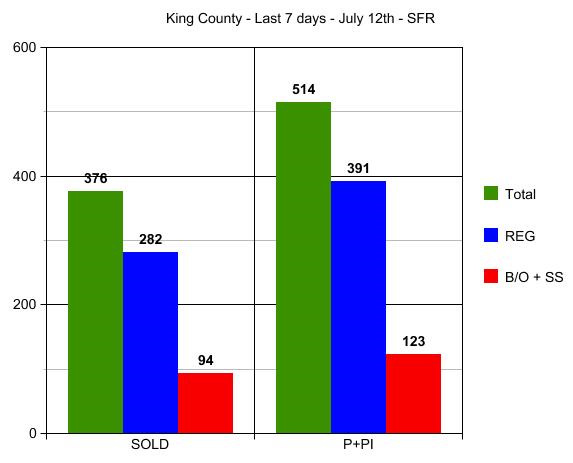 Back in early October, I wrote a brief story of a young man (whom I have dubbed as “Truliaboy”) who purchased a nice home via a short sale at 15% under the then current market value. It is a beautiful home on over an acre of land purchased for less than $300,000. With his permission I am posting this follow up story for the benefit of those who purchased “awesome deals” with little down, to show how one person was able to get rid of the Mortgage Insurance Premium via a refinance, and save a lot of money on interest as well, less than one year after his original purchase.
Back in early October, I wrote a brief story of a young man (whom I have dubbed as “Truliaboy”) who purchased a nice home via a short sale at 15% under the then current market value. It is a beautiful home on over an acre of land purchased for less than $300,000. With his permission I am posting this follow up story for the benefit of those who purchased “awesome deals” with little down, to show how one person was able to get rid of the Mortgage Insurance Premium via a refinance, and save a lot of money on interest as well, less than one year after his original purchase.
At time of purchase, the Annual Percentage Rate (including up front loan costs) on Truliaboy’s TIL (Federal Truth-In-Lending Disclosure Statement) was 5.336%. The recent refinance that closed last week carries an APR of 4.491%…a considerable savings. On the original 30 year loan, the Total Finance Charges for the life of the loan show as $260,169.12. On the recent refinance the new charges for the life of the loan show as $221,385.09.
Total Savings = $38,784.03.
Back to the issue of the Mortgage Insurance Premium. The Mortgage Insurance Premium on the original loan was $109 a month, and the loan amortization on the TIL included this amount for the first 9 years plus 5 months on a slightly decreasing scale. $109 a month in the first year and down to $93 a month in the final payments. By eliminating the monthly mortgage insurance premium, Truliaboy saved approximately $11,300 in monthly mortgage insurance premium payments.
His original monthly payment, including MIP, was $1,536.60. His new payment is $1,363.05. Total savings in his current monthly payment $173.55 per month.
1) If you purchased a house in the last year or two at significant savings by buying a short sale or a bank owned home with less than 20% down, you should look into the possibility of getting rid of your Mortgage Insurance Premium by refinancing your loan IF the current value is likely 20% less than your new Total Mortgage Amount.
2) Be sure to re-evaluate the Total Savings vs. the Total Cost of the New Loan AFTER the new appraisal comes in. It could cost you a few hundred dollars in “wasted” appraisal fee, but you need to be ready to pull the plug IF the new appraisal does not come in at an amount that will equal a new Loan to Value that is more favorable than your original loan. Make sure the monthly savings via reduced or eliminated Mortgage Insurance Premium (and interest savings if applicable) justify the cost of the refinance. Check your “comps” in advance as much as possible, to help determine the odds of a successful outcome.
3) Be sure to make as many LOW COST improvements to the home (if you have not already done so) to help insure a successful new appraised value. Clean and stage your home for the appraiser’s visit the same as you would for a potential homebuyer.
Part of the success lies in the fact that Truliaboy made some improvements to the home in the short time that he has owned it. The cost of the home’s improvements since time of purchase was approximately $10,000 to $12,000 BUT Truliaboy used his $8,000 First Time Homebuyer Tax Credit to make a huge dent in the cost of those improvements.
That is an AWESOME example of how to spend your $8,000 Tax Credit wisely, and parlay it into additional savings over the time you will be living in the home, by using the improved value to get rid of the PMI / MIP!!!
As in the original story, Truliaboy gets all of the credit from me for a job well done…AGAIN! Though Truliaboy continues to credit St. Joseph for his HUGE success story, I think it was a combination of factors, not the least of which was Truliaboy’s efforts that caused St. Joseph to bless him with this successful outcome.
If you were wise and lucky enough to purchase a home at considerably less than the appraised value at time of purchase in the last couple of “sub-prime crisis” years, and you bought the home with less than 20% down payment, be sure to look into the possibility of turning that “instant equity” into REAL today savings by eliminating the Mortgage Insurance Premium via a refinance.





 Thursday
Thursday
